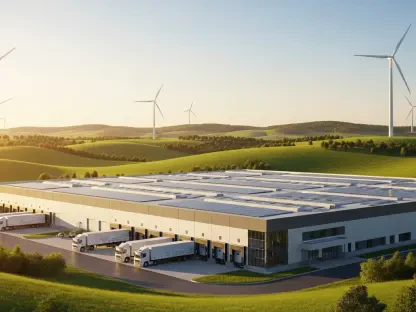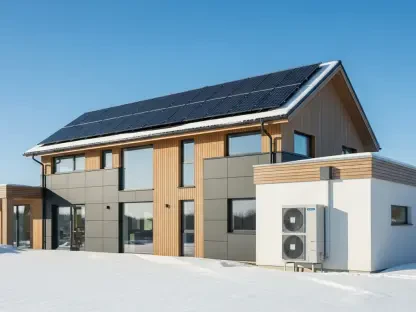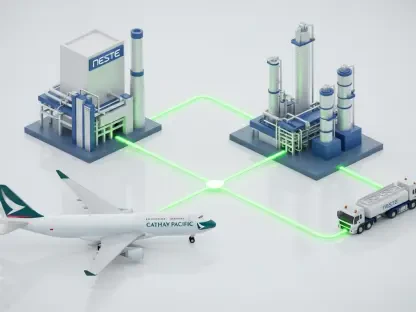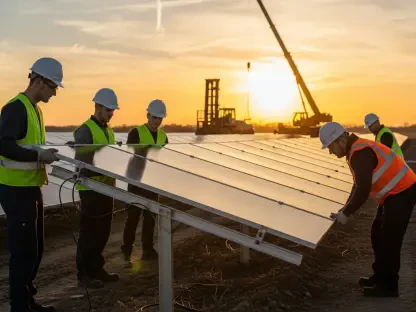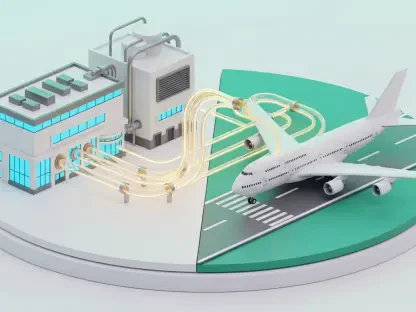The Intersection of Mining and Renewable Energy in Saudi Arabia
Imagine a vast desert landscape where the relentless sun powers not just life but also one of the most energy-intensive industries—mining. In Saudi Arabia, this vision is becoming a reality through a groundbreaking partnership between the mining and renewable energy sectors, setting a new standard for industrial sustainability. This collaboration is at the forefront of transforming how heavy industries operate, leveraging the abundant solar potential of the region to fuel operations while slashing carbon footprints.
At the heart of this transformation is the alliance between Ma’aden, the Kingdom’s largest mining company, and Emerge Energy, a joint venture of Masdar and EDF. Their flagship project at the Al Baitha Bauxite Mine integrates an 8 MWp solar photovoltaic array with a 30 MWh battery storage system, ensuring a reliable power supply in a challenging environment. This initiative marks a significant step toward reducing reliance on fossil fuels, showcasing how renewable energy can be seamlessly embedded into industrial frameworks.
The broader significance of this synergy lies in its alignment with Saudi Arabia’s Vision 2030, a strategic plan to diversify the economy beyond oil. By incorporating solar power and energy storage into heavy industry, this project not only promotes sustainable practices but also positions the Kingdom as a leader in green innovation. Key players are demonstrating that such integrations are not just feasible but essential for economic resilience and environmental stewardship in the modern era.
Pioneering Sustainable Practices in Industrial Operations
Key Trends Driving Green Industrial Transformation
The shift toward renewable energy in traditionally fossil fuel-dependent sectors like mining represents a monumental trend reshaping industrial landscapes. In Saudi Arabia, the adoption of solar power reflects a global movement to decarbonize operations, driven by the urgent need to meet climate goals. This transition is particularly impactful in regions with abundant sunlight, where solar solutions offer a cost-effective alternative to conventional energy sources.
A critical component of this trend is the deployment of solar-plus-storage systems to tackle the intermittency of renewable energy. These systems ensure a consistent 24/7 power supply, even in harsh desert conditions where grid reliability can be a challenge. By addressing such operational hurdles, the technology paves the way for broader adoption across energy-intensive industries, proving that sustainability and efficiency can coexist.
Moreover, the global push for Environmental, Social, and Governance (ESG) standards is accelerating this green transformation. Investors and stakeholders increasingly prioritize companies that demonstrate environmental responsibility, creating new opportunities for industrial decarbonization. This alignment with ESG criteria not only enhances corporate reputations but also opens doors to international funding, reinforcing the momentum for sustainable practices in the region.
Project Impact and Performance Metrics
Focusing on tangible outcomes, the Al Baitha Bauxite Mine project stands as a testament to the potential of renewable integration. The initiative generates an estimated 17,300 MWh of clean energy annually, resulting in a reduction of 13,800 tons of carbon emissions each year. This impact is comparable to removing thousands of vehicles from the roads, highlighting the profound environmental benefits of such endeavors.
Looking ahead, the scalability of this model offers a blueprint for other energy-intensive sectors. The success at Al Baitha suggests that industries beyond mining, such as manufacturing, could adopt similar frameworks to lower their environmental impact. This adaptability underscores the project’s role as a catalyst for widespread industrial change, with potential ripple effects across the Middle East.
Further amplifying this potential, Emerge Energy has ambitious plans to develop an additional 147 MW of solar projects in the coming years. This expansion signals robust regional growth in renewable energy adoption, positioning Saudi Arabia as a hub for green industrial innovation. Such developments indicate a promising trajectory for scaling sustainable solutions across diverse operational landscapes.
Challenges in Decarbonizing Energy-Intensive Industries
Transitioning mining operations to renewable energy is not without significant hurdles, particularly the high upfront costs associated with infrastructure development. Installing solar arrays and storage systems in remote desert locations adds layers of complexity, requiring substantial capital investment. These financial barriers can deter companies from embarking on similar sustainability journeys without adequate support or incentives.
Beyond costs, market-driven challenges such as fluctuating energy demands pose additional risks. Mining operations often require uninterrupted power, necessitating reliable backup systems to complement renewable sources. Ensuring this balance in isolated regions demands innovative engineering solutions and strategic planning to mitigate potential disruptions to productivity.
To address these obstacles, long-term Power Purchase Agreements (PPAs) offer a viable path forward, providing financial stability for renewable projects. Additionally, advancements in energy storage technology continue to enhance system reliability, reducing dependency on traditional energy backups. By leveraging such strategies, industries can navigate the complexities of decarbonization while maintaining operational efficiency.
Regulatory Framework and Vision 2030 Alignment
Saudi Arabia’s Vision 2030 serves as a cornerstone for fostering sustainable industrial practices, aiming to diversify the economy away from oil dependency. This ambitious plan prioritizes renewable energy adoption, setting a clear path for industries to align with national goals. The framework encourages innovation by creating an environment conducive to green investments and partnerships.
National policies targeting net-zero emissions by 2060 further bolster this agenda, providing a long-term vision for environmental progress. These targets directly support the integration of renewable energy in heavy industries, as seen in projects like Al Baitha. Regulatory backing ensures that such initiatives are not only feasible but also aligned with broader sustainability objectives.
The impact of this supportive regulatory landscape extends to compliance with ESG criteria, enhancing the Kingdom’s appeal to international investors. By streamlining project implementation and offering incentives, policies under Vision 2030 facilitate the growth of renewable energy solutions. This synergy between regulation and industry action is pivotal in positioning Saudi Arabia as a global leader in sustainable development.
Future Outlook for Green Industrial Innovation in the Middle East
The integration of renewable energy in Saudi Arabia hints at a transformative future for the broader Middle East, with scalability across sectors like steel and cement on the horizon. As industries witness the success of mining projects embracing solar power, the potential for cross-sector adoption grows. This trend could redefine energy models, prioritizing sustainability in regions historically reliant on fossil fuels.
Emerging technologies in distributed solar and storage systems are poised to further disrupt traditional industrial energy frameworks. Innovations that enhance efficiency and reduce costs will likely accelerate the transition, making renewable solutions more accessible. Such advancements promise to reshape how industries approach power generation and consumption in challenging environments.
Global economic conditions and investor interest in ESG-focused projects will also shape this trajectory, with national policies playing a crucial role. As sustainability becomes a key criterion for funding, the Middle East stands to attract significant capital for green initiatives. This convergence of technology, policy, and investment signals a dynamic era of industrial innovation, with Saudi Arabia at the forefront.
Conclusion: A Blueprint for Sustainable Industrial Growth
Reflecting on the journey, the partnership between Ma’aden and Emerge Energy at the Al Baitha Bauxite Mine has proven to be a transformative milestone in industrial decarbonization. It demonstrated that even the most energy-intensive sectors could pivot to renewable energy, aligning seamlessly with Vision 2030’s vision for a diversified economy. This collaboration not only reduced environmental impact but also elevated the Kingdom’s standing in sustainable innovation.
Moving forward, stakeholders should prioritize replicating this model by fostering collaborations that bridge technology and industry needs. Governments and private entities could focus on incentivizing long-term renewable energy agreements to ensure financial viability. Additionally, investing in research for advanced storage solutions would address lingering reliability concerns, paving the way for broader adoption.
Ultimately, the Middle East’s green industrial wave offers immense potential for those willing to engage early. By capitalizing on regulatory support and global ESG trends, investors and industries could secure substantial returns while contributing to a sustainable legacy. This path forward demands bold action, strategic partnerships, and a commitment to innovation as the region charts its course in a decarbonized world.


